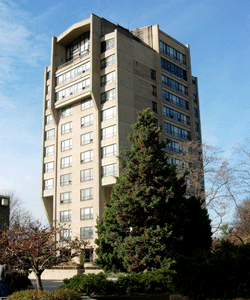By Jesse Cataldo
Most colleges and universities boast an international students program, a system which allocates benefits to both the foreign students and the institution itself. The international students benefit from the exciting opportunity to attend school while at the same time immersing themselves in a foreign culture. The University benefits from the influx of new students from all over the world, which creates a feeling of diversity on campus.
As of this semester, there are approximately 200 recognized international students working toward their degree at the University. Once becoming part of the University student body, these international students take on responsibilities identical to those of domestic students. They share the same academic requirements and attend the same classes as the rest of the student population.
The degree to which the international program is integrated with the academic programs at the University raises questions about how closely it should be otherwise. Despite being the same as other students on an academic basis, international students are housed separately in their first year, on the fifth to seventh floors of Alliance. Generally, this system is not nearly as restrictive as it sounds. The students are not truly segregated from the rest of campus and are in no way forced to remain in Alliance if they do not wish to.
Cihan Ergul, the director of the international program, said, “If a student makes a request, they will be transferred to another building.”
After the first year, most of the international students choose to leave that particular residence hall and venture out to other locations on campus. With a lax residential system, it seems questionable as to why the international students are cloistered together in the first place.
Other schools in the New York metropolitan area, such as Adelphi and St. John’s, do not segregate their international students, dispersing them across campus even in the students’ first year.
The process of placing students from abroad in the same living area can be positive for new students who find themselves in a foreign land with few acquaintances and a sometimes less than perfect command of the English language. Living amongst people who are experiencing the same difficulties as themselves and share some similar characteristics for a background or country of origin can make the first few weeks on campus a great deal easier.
At the same time, this separation denies incoming international students the full college experience. Housing them together may be easier, but also serves as a barrier between the international and the domestic student. Fully integrating these two types of students would put foreign students at equal standing with other students, without any kind of habitual distinction and give them the unique experience of living with someone from a different culture. Additionally, the Organization of International Students, a recognized University student club, allows the international students opportunity to meet and share their problems.
Another pressing concern of the program is its size, which pales in comparison to other schools in the area. St. John’s has approximately 900 international students to the University’s 200. The Tisch School, a small internal subsidiary of New York University, has over 350. The student population at St. John’s is only one-third larger than the University’s, yet their program more than quadruples the University’s in size. Even a smaller school, such as the nearby C.W. Post campus of the State University of New York, has 150 more than the University, despite that the University’s student body is numbered at 9,100, while theirs is just over 3,000. The only school in the area with a smaller international program than the University is Adelphi, another small school. Their program has only roughly 50 less students than the University.
Equally as troubling is the percentage of foreign students in respect to total student population, which according to collegeboard.com, stands at a paltry one percent. Other New York metropolitan schools average three percent, with some, such as Stony Brook reaching as high as five percent. The University’s one percent rivals’ remote state schools like Oswego and Oneonta, both located in upstate New York. The percentage is a low standing for a university only miles from one of the world’s most thriving metropolises.
Considering that the international curriculum, it can be viewed as a microcosm of the larger student body. The fact that the number of international students is so small is not only troubling for this specific program, but for the University as a whole, as they reflect a larger problem. Is this problem due to failures in the recruiting process, or is that the University is less desirable than other schools? If the latter is true, it would not be surprising for total admission to follow the pattern of the international program.

Most first-year international students are placed in Alliance Hall from the fifth to seventh floors. (Harry Tanielyan/The Chronicle)
